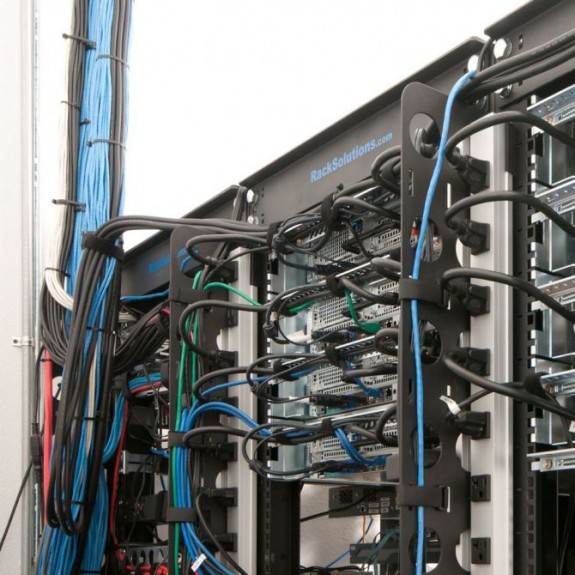Computers and technology today provide some really amazing tools, but most of those components are still run on hardware that is as old as the first radios – they run on power and data cables.
Electrical cords may not be beautiful; however, they are necessary and until someone invents a 30-day long battery for just about everything, wires will still be needed in the foreseeable future.
So, to avoid the rat’s nest of wires and cables that often occurs so quickly when more than a handful of components are connected, cable management is the key.
The basic supplies that will be needed are as follows:
- A note pad and pen
- Plastic zip ties
- Expandable split hosing
Cleaning Up the Wiring
The first step in good cable control is routing. Planning out how routing should work depends on the positioning of components. However, once they are in place, the placement of the cables shouldn’t be left to gravity.
Instead, cabling can be routed along walls, frames, furniture and more. So start off with the notepad and pen and make a basic map of where every component should be along with the furniture or shape of the room. The positioning will start to become apparent on paper as well as how the wiring and cabling has to be run to get to power sources or share data.
With a good grid map, placement will be easy. Remember, the main goal is to also keep the cabling out of the way and run snugly so there’s not loops all over the place that can catch a foot or piece of furniture like a chair leg.
Zip-ties and bands work well in keeping multiple cables together in one run along the path, but they still need to be pulled properly so there’s just enough slack to hang without pulling loose from a plug or the back of a component.
The Next Steps
The second step is to use expandable hose where possible. This makes it extremely easy to lift and move multiple cables quickly, especially during cleaning or relocation of equipment. With splitting down the middle of expandable hose, wires can be inserted or removed quickly without having spend time fishing them through the hosing.
Third, keep the cable management laid out in zones. This avoids the common problem of overloading one power socket or anchor with too many power lines.
By spreading out the power demands, the risk of electrical fires is extremely reduced as the power demand is then well within the acceptable range of the sockets, especially when not all wall sockets have a built in safety fuse for overloading situations.
The End Product
Ideally, when electrical cords and cables are placed and run properly they should just about be invisible to the casual eye. They won’t completely disappear; cables are obvious and necessary for running components properly, but they can at least be made a bit more subtle. It just takes a bit of thinking, planning, and the right tying supplies as well as expandable hosing.
+Katrina is a product specialist for RackSolutions, the market leader for designing and manufacturing custom racking products for the IT industry! You can read more about our company here

